
Gramene 2021: harnessing the power of comparative genomics and pathways for plant research (Nucleic Acids Research)
Plant Science Research Weekly
Gramene (www.gramene.org) is a curated, open-source, integrated data resource for comparative functional genomics in crops and model plant species. It launched 20 years ago and has continually grown and expanded to incorporate new tools and resources. This update by Tello-Ruiz et al. describes its…
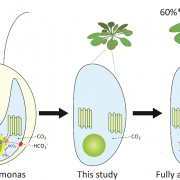
Condensation of Rubisco into a proto-pyrenoid in higher plant chloroplasts (bioRxiv)
Plant Science Research Weekly
Rubisco is a major enzyme in assimilating CO2 during photosynthesis. The efficiency of CO2 assimilation is compromised by a low ratio of CO2/O2, especially in C3 plants like rice, wheat and soybean. Algae sequester Rubisco as a condensate in a microcompartment called a pyrenoid within the chloroplast…
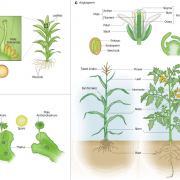
Conserved transcriptional programs underpin organogenesis and reproduction in land plants (bioRxiv)
Plant Science Research WeeklyLand plant evolution accompanied a plethora of evolutionary novelties such as cells that compose complex organs (e.g., stems, leaves, roots) and male/female gametophytes. The identity and conservation of the transcriptional programs underlying organogenesis and reproductive development across land plants…

CAMEL in the canal: Regulation of PIN proteins during canalization (Science)
Plant Science Research WeeklyAuxin transport during development or wound regeneration is known to require auxin-induced channel or ‘canal’ formation that includes polar localization of PIN auxin transport proteins. Hajný and colleagues have characterized a receptor-like kinase (RLK) complex involved in auxin-induced pattern…
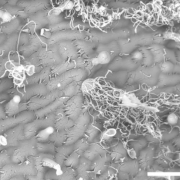
Formation of flavone-based wooly fibres by glandular trichomes of Dionysia tapetodes (bioRxiv)
Plant Science Research Weekly
Many people are familiar with the popular houseplant Cephalocereus senilis, which also known as old man cactus because it is covered with long white hairs that are thought to protect it from frost and UV light. A similar function is described for the wooly fibers that cover the alpine plant Dionysia…
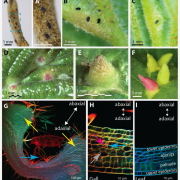
A novel family of secreted proteins linked to plant gall development (bioRxiv)
Plant Science Research WeeklyInsect-induced galls are abnormally patterned plant organs that provide insects with protection and a nutrient source, yet mechanisms underlying the development of these unique organs are mostly unknown. To identify insect factors that govern gall pattering, Korgaonkar et al. turned to the natural variation…
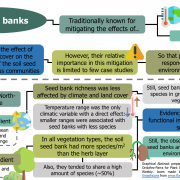
Buffering effects of soil seed banks on plant community composition in response to land use and climate (Glob. Ecol. Biogeogr.)
Plant Science Research Weekly
Plant communities seem to be able to mitigate the effects of climate and land-use change, given their responses are usually observed long after environmental conditions have changed. This lagged response has been attributed to the presence of persistent soil seed banks. Still, the evidence of their…

Plant Science Research Weekly: November 13, 2020
WWR Full PostReview: Homoeologous exchanges, segmental allopolyploidy, and polyploid genome evolution
Polyploidy or whole-genome duplication (WGD) is an important process in plant evolution and speciation. Additional sets of chromosomes can be derived from intraspecific genome duplication (autopolyploidy) or…

Careers in Plant Biology Startups
Careers, Plantae Webinars1 Comment
/
Careers in Plant Biology Startups
Recorded Thursday, November 12, 2020
About This Webinar
Startups are an essential component of the plant biology and ag-tech industry ecosystems. In this webinar, organized by the Women in Plant Biology Committee, you will learn what it’s like to work at a…

